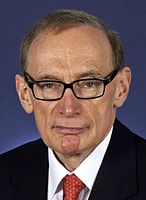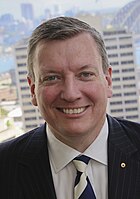Our website is made possible by displaying online advertisements to our visitors.
Please consider supporting us by disabling your ad blocker.
2003 New South Wales state election
This article includes a list of general references, but it lacks sufficient corresponding inline citations. (December 2024) |
| |||||||||||||||||||||||||||||||||||||||||||
All 93 seats in the New South Wales Legislative Assembly and 21 (of the 42) seats in the New South Wales Legislative Council 47 Assembly seats were needed for a majority | |||||||||||||||||||||||||||||||||||||||||||
|---|---|---|---|---|---|---|---|---|---|---|---|---|---|---|---|---|---|---|---|---|---|---|---|---|---|---|---|---|---|---|---|---|---|---|---|---|---|---|---|---|---|---|---|
| |||||||||||||||||||||||||||||||||||||||||||
 Two-candidate-preferred margin by electorate | |||||||||||||||||||||||||||||||||||||||||||
| |||||||||||||||||||||||||||||||||||||||||||
The 2003 New South Wales state election was held on Saturday 22 March 2003. All seats in the Legislative Assembly and half the seats in the Legislative Council were up for election. The Labor Party led by Bob Carr won a third four-year term against the Liberal–National Coalition led by John Brogden.
Future New South Wales premiers, Gladys Berejiklian and Kristina Keneally, entered parliament at this election.
This election saw the New South Wales division of the Liberal Party record its lowest ever primary vote at a state election.
Previous Page Next Page




